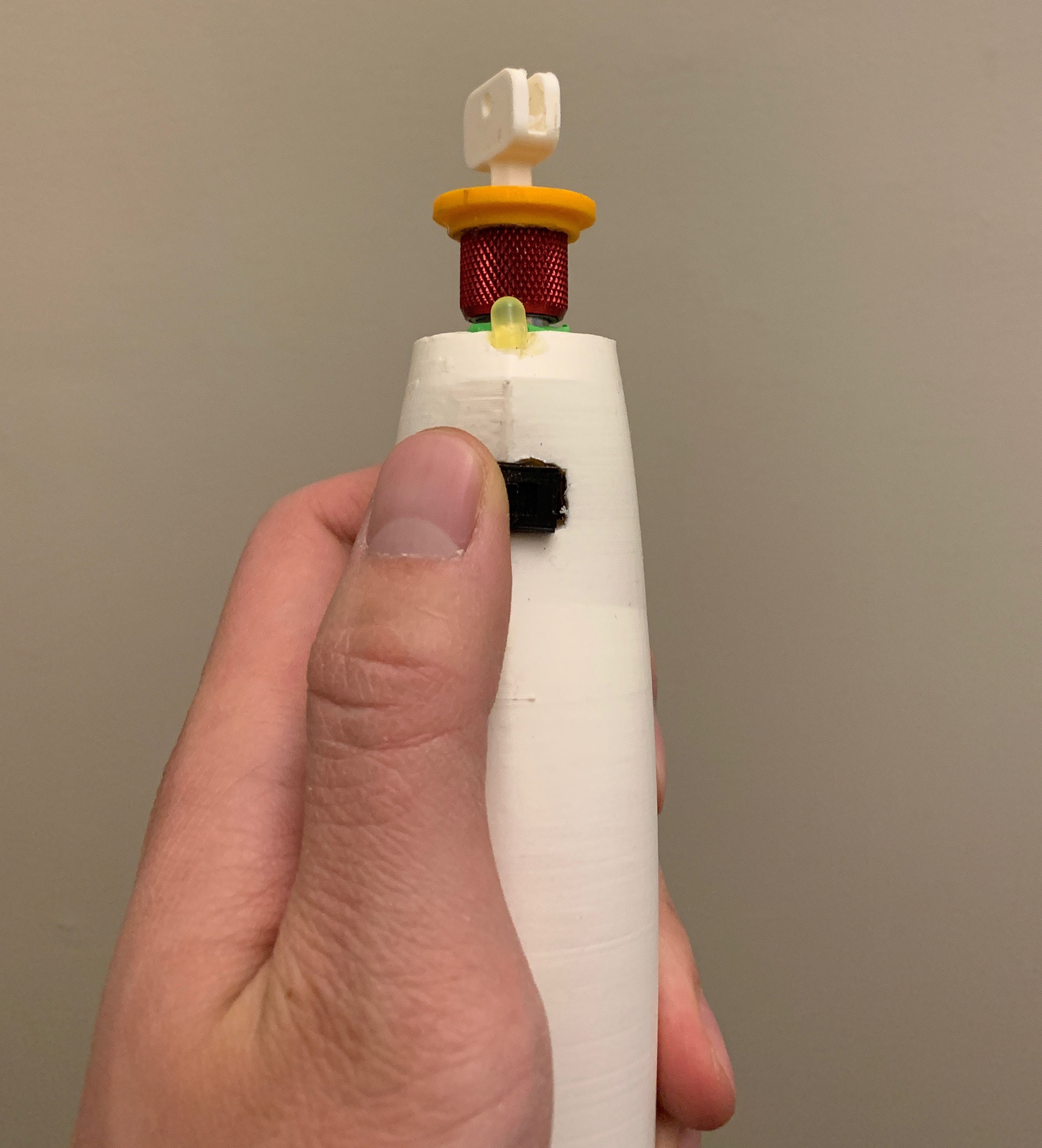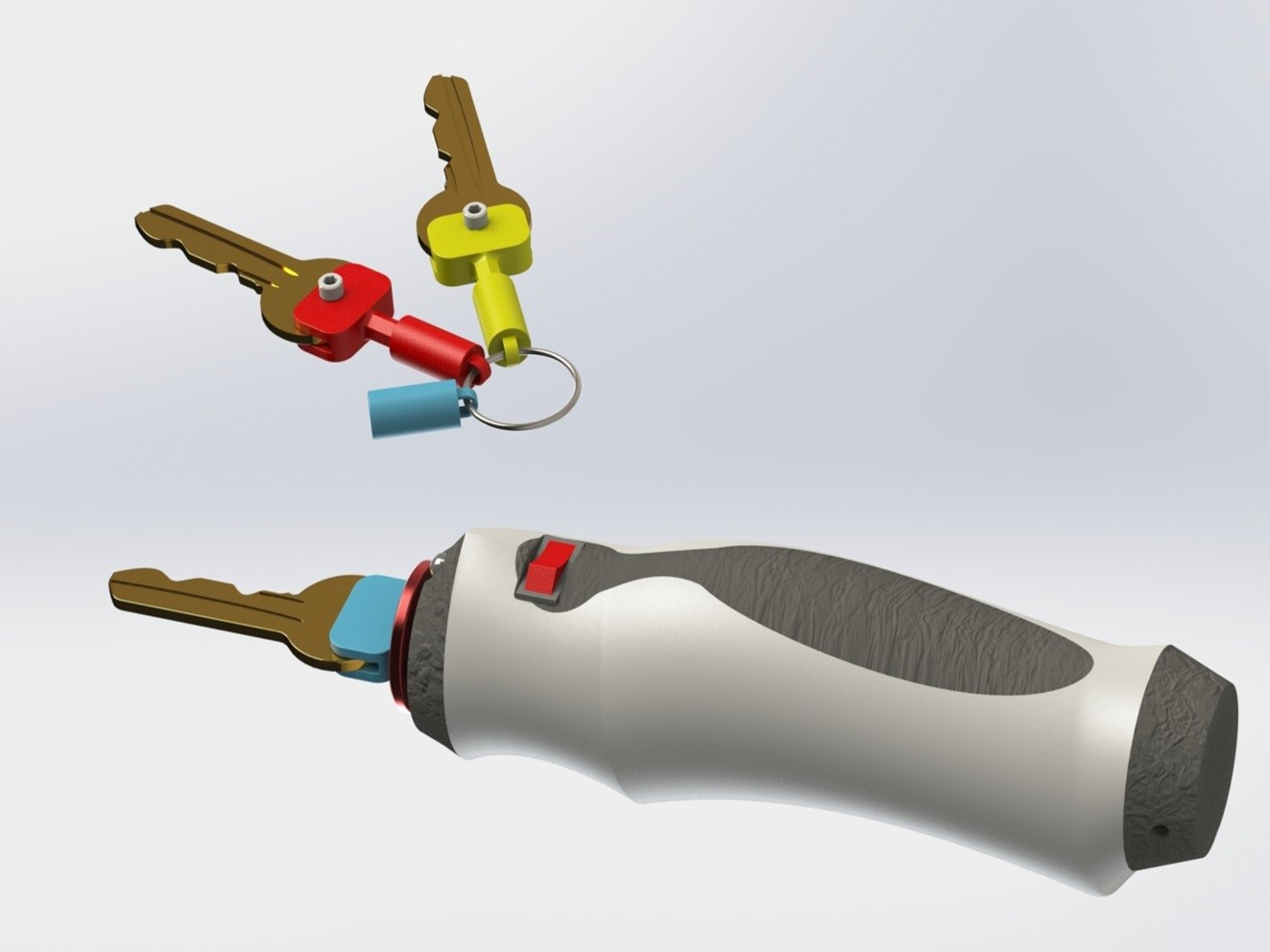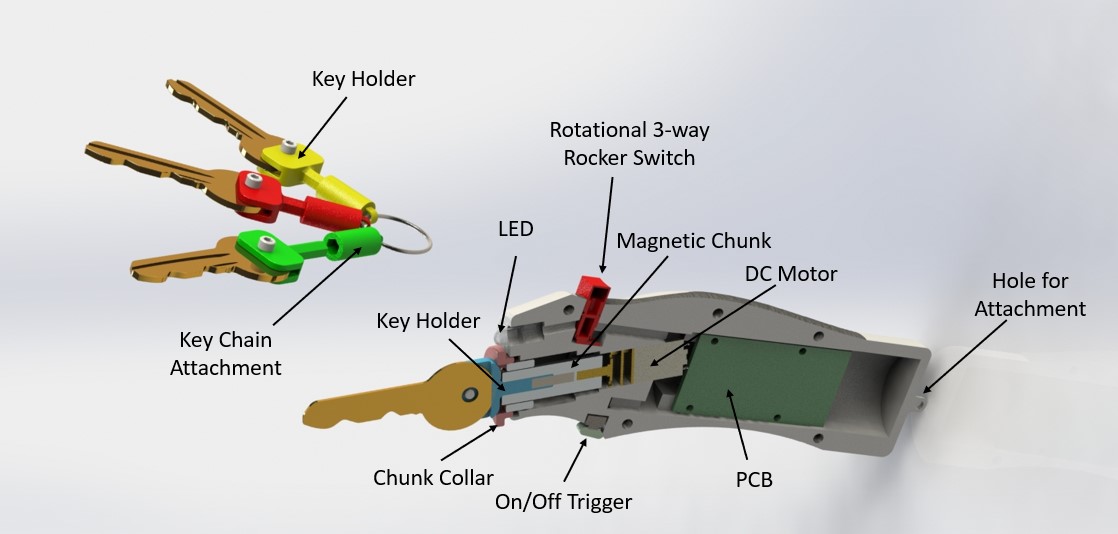Turn-t
In fall of 2018, I took a product design class as my senior design: MAE 4340 - Innovative Product Design via Digital Manufacturing. The course focused on iterative design based on prototyping, testing, consumer feedback, and limitations set by mass manufacturing. Mabel Lawrence, Troy Mock, Ilayda Samilgil, Alex Leissl, Sofya Pugach, and I formed KOI to redesign senior living experience. After engaging in extensive empathy field work, we found that a lot of the elderly suffer from a gradual decrease in everyday abilities. We want to solve the problem of limited mobility to make everyday tasks stress-free. Diving deeper into the struggles of our target audience, we found that elderly people with arthritis, Parkinson’s, paralysis, tremor, and rheumatoid arthritis have trouble locking and unlocking doors due to wrist pain and tremors. To help fix this problem, we have designed Turn-t: an automatic key turning device!



Turn-t is a motorized key turner that help senior citizens relieves wrist pain. The device consists of two parts. The first part is a handle that stores the electronics and gear motor. It is designed for optimal hand grip during key rotation. The handle also includes a flashlight to assist with the key-insertion process. The rocker switch on the top of the handle determines key rotation, flashlight activation, and return-to-start functionality. There is a flush-mounted push button on the bottom of the handle to actuate the key rotation.
Basic Functions of Turn-t
- Serves as an attachment to house keys.
- Provides rotational torque to the keys, which unlocks the doors
- Provides an ergonomic handle for elderly
- Fits into a handbag or attach tp belts or walker
- Reduce the wrist motion and wrist pain during the process of unlocking/locking doors
Special Features of Turn-t
- A flashlight to provide better visibility of the key hole and to ease the alignment of the keys in the hole
- The device can turn the keys clockwise and couterclockwise
- The device remembers the initial position of the key and is able to bring it back the original position after the lock has been unlocked
- The device is compatible for usage of multiple keys due to a holder attachment on the key, which can be placed and removed from the turner device
- On/off button to prevent unintentional usage of the device
As the electrical lead in the team, I was responsible for prototyping & testing device’s electronics on breadboard and designed an embedded system for the device. A representative schematics was created via Fritzing to make sure that the number of pins are sufficient for our testing. The schematics is shown below:
Due to the small size demand of our product, we decided to make a prototype with embedded electronics and we chose to use a smaller microcontroller - Arduino Mini Pro. A high torque DC motor provides the necessary torque to turn the key clockwise/counterclockwise to lock/unlock doors. The encoder behind the motor records the initial position and bring it back to inital position after the lock has been unlocked/locked.
